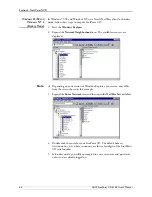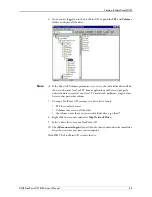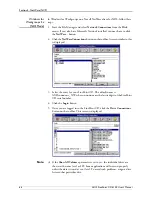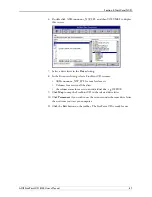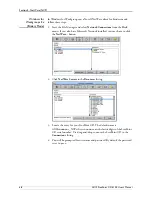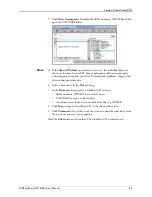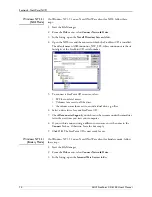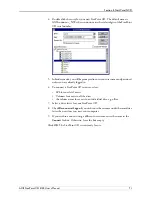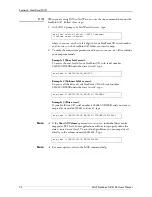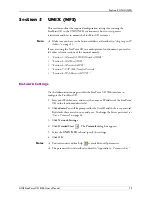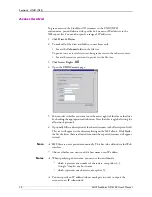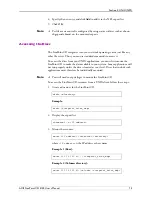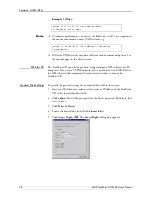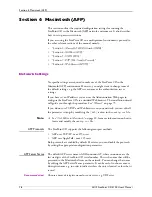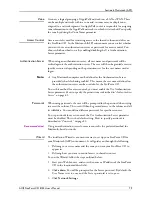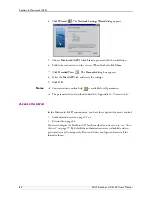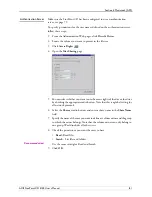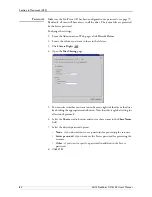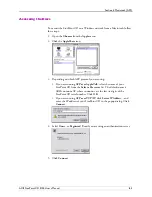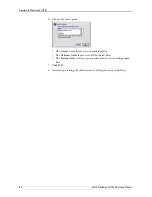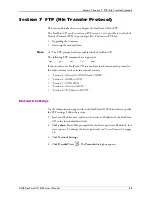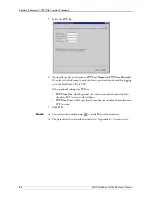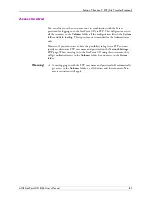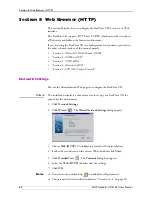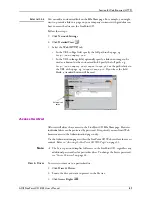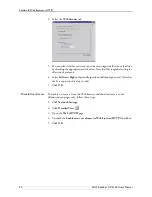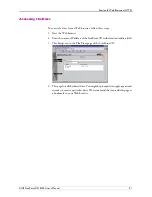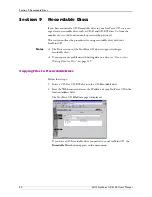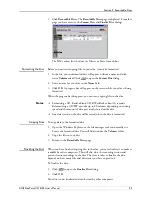
Section 6: Macintosh (AFP)
78
AXIS StorPoint CD E100 User’s Manual
Section 6 Macintosh (AFP)
This section outlines the required configuration settings for running the
StorPoint CD in the Macintosh (AFP) network environment. It also describes
how to set up access restrictions.
If you are using the StorPoint CD in a multiprotocol environment, proceed to
the other relevant sections of the manual, namely:
•
“Section 3 -
Microsoft & IBM Networks (SMB)
”
•
“Section 4 -
NetWare (NCP)
”
•
“Section 5 -
UNIX (NFS)
”
•
“Section 7 -
FTP (File Transfer Protocol)
”
•
“Section 8 -
Web Browser (HTTP)
”
Network Settings
No specific settings are required to make use of the StorPoint CD in the
Macintosh (AFP) environment. However, you might want to change some of
the default settings, e.g. the AFP server name or the authentication server
settings.
If you have set an IP address, you can use the Administration Web pages to
configure the StorPoint CD via a standard Web browser. The installation wizard
will guide you through the procedure. See “
Wizard
” on page 79.
If you do not use TCP/IP and Web browsers on your network, you can edit all
the parameter settings by modifying the
[AFP]
section in the
config.ini
file.
Note:
See “
Text Editor in Macintosh
” on page 20, for more information on how to
locate and modify the
config.ini
file.
AFP Protocols
The StorPoint CD supports the following transport methods:
•
AFP over TCP/IP - max 255 users
•
AFP over AppleTalk - max 125 users
Both protocols are enabled by default. However, you can disable the protocols
by setting the appropriate configuration parameters.
AFP Server Name
The default AFP server name is AXIS<nnnnnn>AT, where <nnnnnn> are the
last six digits of the StorPoint CD serial number. This is the name that will be
presented to the Macintosh clients on the network. You can change that name
by editing the AFP Server Name parameter. It can be useful to choose a more
descriptive name, e.g. in order to indicate where the unit is located, or for what it
is used.
Recommendation!
Choose a more descriptive name for your server, e.g CD Server.

